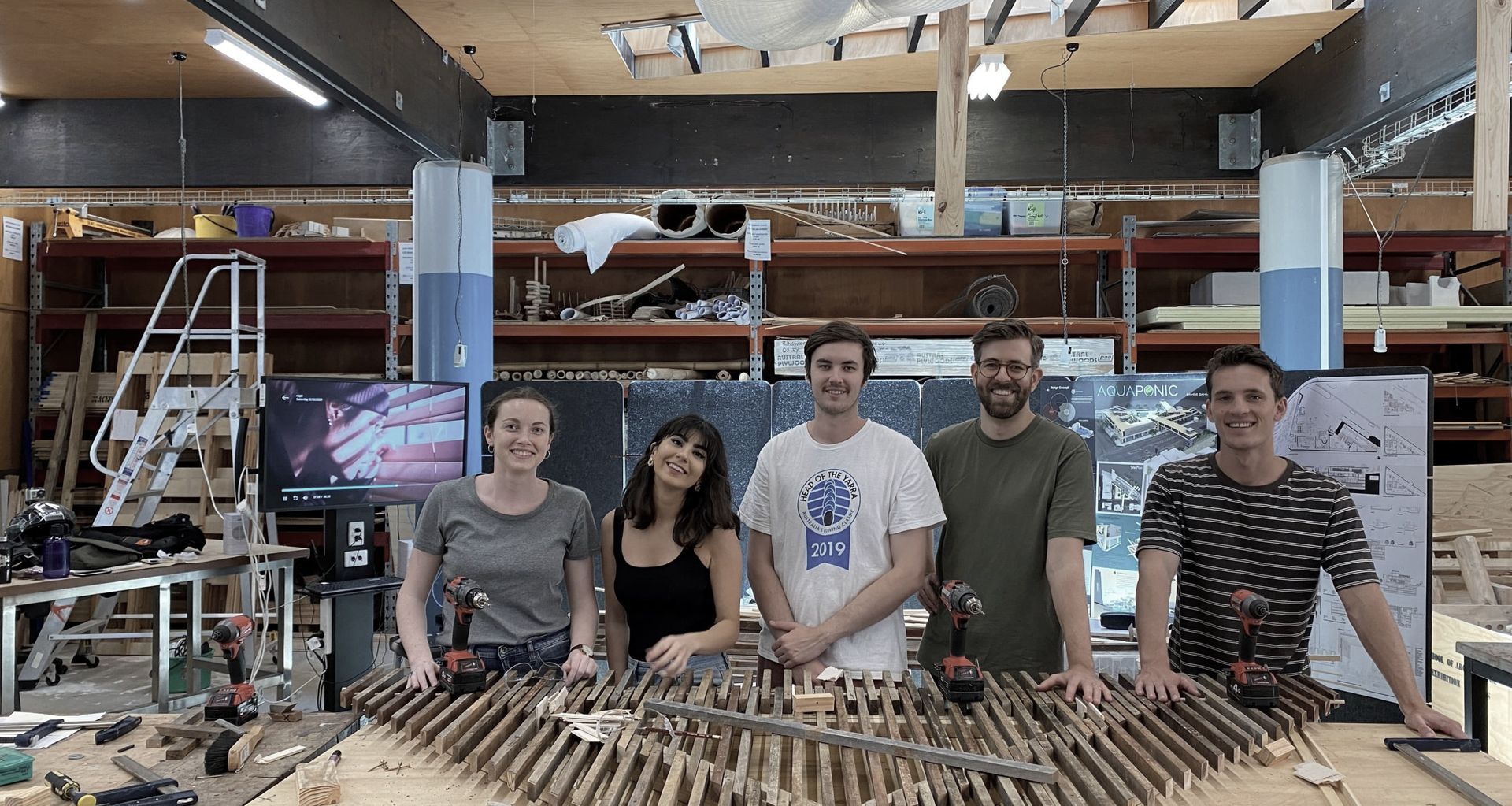Responsible Wood connects with next generation of leaders in architecture

As fearured in the Timber and Forestry E News
TWO University of Queensland architectural students have been awarded the Responsible Wood Architectural Prize for Excellence in Timber Design for their research paper and model on the construction of a fire observation tower in the Brisbane Valley region.
The students, Dylan Francks and Simin Louei, assisted by Matthew Walton, Alec Hutchinson and Emile Hildebrandt, presented research design and models for the Emu Creek Observation Tower, which uses culturally sustainable participatory principles.
It is has been argued that the emphasis of sustainable development within the field of architecture has been mostly concentrated on environmental ‘green issues’, with the aspects of culture lying outside the scope of research for many years.
However, in recent times, there appears to be growing interest among scholars to emphasise the important role that culture plays within the maintenance of sustainable development.
The project, completed for the requirements of ARCH7071: Arch Research: Environmental Sustainability, looked to establish the region as a new travel destination for campers and adventurers within southeast Queensland. The on-site facilities include camping grounds, 4×4 tracks, a water sports activity area, raised walking tracks, horse stables, an auditorium, zip lines and a 30 m tall fire lookout tower.
The polyhedral tower is constructed from more than 200 singular prefabricated panels which are attached to a larger superstructure. The panels act as a perforated screens or louvres, shading visitors from the harsh Queensland sun as they climb to the observation platform at the top of the tower. Once visitors reach the peak they are rewarded with a view of the surrounding Brisbane Valley and mountain ranges.
The tower design incorporates locally-sourced under-utilised grey ironbark (Eucalyptus drepanophylla), a timber abundant in the region which can be found in one of the many nearby timber plantations, with the tower acting as an “ode to the region’s colonial past”.

As the students Dylan and Simin suggest, there could be significant issues of sustainable development that will be missed if the role of culture is undermined, with culture itself providing a necessary foundation and condition to reach sustainable development goals.
Though there has been a distinct shift towards the inclusion of indigenous architecture in contemporary Australian society, mixed intentions could be partly to blame for the varied results and slow uptake associated with the practice, as many scholars and practitioners have been engaged “for their aesthetics rather than politics,” while indigenous collaborators may have participated with less of an aesthetic vision in mind and more for political intent.
Responsible Wood CEO Simon Dorries said the award provided an ideal opportunity to connect with the next generation of leaders in architectural design – a generation increasingly concerned with the wellbeing of global forests.
Responsible Wood is the governing body in Australia for PEFC International, the world’s largest forest certification scheme.
“Certification plays a crucial role in ensuring forests are managed responsibly and sustainably, now and for multi-generational use in the future,” Mr Dorries said.
“Responsible Wood is committed to working with universities to educate tomorrow’s leaders about the power of forest certification for greater good.”
As the students Dylan and Simin suggest there could be significant issues of sustainable development that will be missed if the role of culture is undermined, with culture itself providing a necessary foundation and condition to reach sustainable development goals.
Though there has been a distinct shift towards the inclusion of indigenous architecture in contemporary Australian society, mixed intentions could be partly to blame for the varied results and slow uptake associated with the practice, as many scholars and practitioners have been engaged “for their aesthetics rather than politics,” while indigenous collaborators may have participated with less of an aesthetic vision in mind and more for political inte
In addition to the architectural prize, a Responsible Wood Civil Engineering Prize was also presented to UQ students William Webster and Duncan Hossy.
Captions: University of Queensland architectural students at work on the design of a fire observation tower in the Brisbane Valley – Emilie Hildebrandt, Simin Louei, Alec Hutchinson, Matthew Walton and Dylan Francis
Captions: Emphasis on sustainable development – model of the Emu Creek Observation Tower designed to include 200 singular prefabricated panels which are attached to a larger superstructure.
